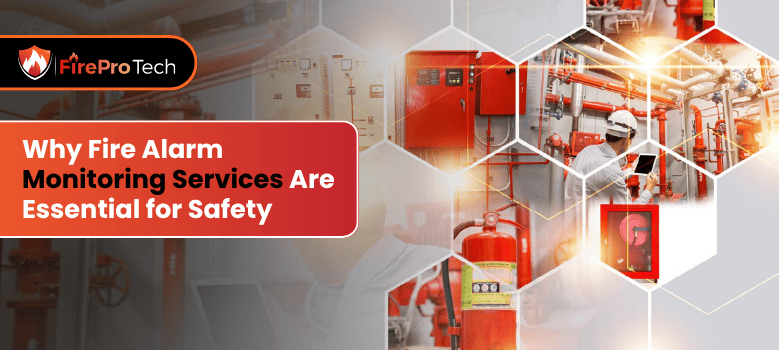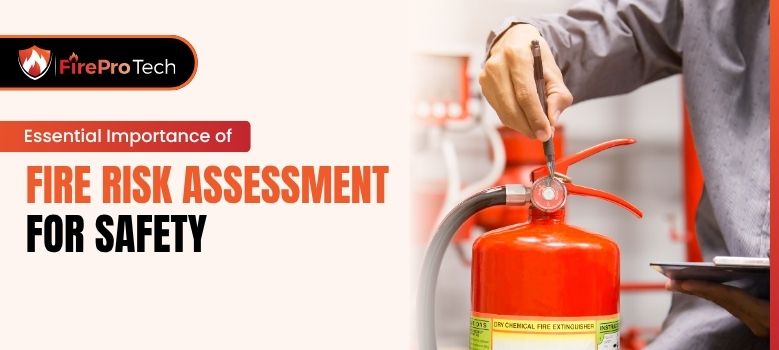Fire alarm monitoring is the linchpin of any modern fire protection strategy. When alarms sound, lives and property are at risk, and every moment matters. While traditional alarm systems make noise to alert occupants, they don’t ensure that emergency services are notified. That’s a serious gap in protection—especially when buildings are empty, occupants are unaware, or help isn’t immediately available.
Monitoring services solve this by linking your fire alarm system directly to trained professionals who oversee alerts 24/7. The result is a faster, more reliable emergency response that doesn’t rely solely on people being present or calling for help.
For business owners and facility managers, this level of coverage provides more than just code compliance—it delivers peace of mind. Knowing that a dedicated team is watching your system around the clock adds a layer of safety that standalone alarms can’t offer. It’s about going beyond the basics to protect what matters most.
In this article, we’ll explore how fire alarm monitoring works, what makes it essential for today’s safety standards, and the advantages it brings to commercial properties and organizations of all types.
What Is Fire Alarm Monitoring and How It Works
Fire alarm monitoring refers to the continuous, real-time observation of your fire alarm system by a professional monitoring center. The goal is simple but vital: ensure that if a fire starts, emergency responders are notified immediately—even if no one is around to make the call.
How the Alert System Operates
When your alarm system detects smoke, heat, or sprinkler activation, it doesn’t just sound off inside the building. It also sends a digital signal to a monitoring center. This signal travels through a secure communication channel—often via cellular, internet, or radio transmission—ensuring that it arrives in seconds.
Once received, monitoring personnel evaluate the alert and follow a pre-established protocol. In most cases, this involves contacting the fire department right away. They may also notify property managers or designated emergency contacts, depending on your setup.
The Importance of Communication Redundancy
Reliable communication is critical for monitoring systems. That’s why most setups use more than one method to send alerts. If the primary channel fails—say, the internet goes down—the signal reroutes through a backup channel like a cellular network. This redundancy ensures the message gets through, no matter the conditions.
These communication systems are designed to function independently of on-site power or phone service. In many cases, they include battery backups or dedicated circuits that keep them online during outages or system failures.
Human Oversight and Real-Time Decision Making
A major advantage of fire alarm monitoring is that it’s managed by trained professionals, not automated systems. Monitoring center staff are available 24/7 and trained to interpret alarm data, determine the severity, and make quick decisions. This human element adds critical context and judgment to emergency response.
Operators can differentiate between different types of alerts—like smoke, heat, or manual pulls—and take action accordingly. That responsiveness helps reduce false alarms and ensures that real emergencies get immediate attention.
Protect Your Business-Get 24/7 Fire Alarm Monitoring Today.
Benefits of Fire Alarm Monitoring and Monitoring Services
A fire alarm system without monitoring is like a smoke detector with no one around to hear it. While traditional alarms are designed to alert people nearby, they offer no guarantee that anyone will call for help. That’s where fire alarm monitoring proves its value—by adding a layer of action that can save lives and property.
Faster Response, Better Outcomes
The faster emergency responders are notified, the more likely they are to contain the fire before it spreads. When fire alarm monitoring is in place, that alert happens within seconds of detection. This can significantly reduce fire damage, protect structural integrity, and limit the disruption to business operations.
Speed isn’t just about property—it’s also about people. A rapid response means fewer injuries and greater safety for anyone in or near the building.
Round-the-Clock Protection
Fires don’t stick to business hours. If your building is unoccupied overnight, on weekends, or during holidays, a traditional system leaves it vulnerable. Fire alarm monitoring fills this gap by watching over your system 24/7.
Whether you manage a school, retail center, or warehouse, knowing someone is always ready to act brings unmatched peace of mind. It’s an invisible safety net that works quietly but reliably in the background.
Enhanced Safety for Occupants
In emergencies, people don’t always think clearly. They may panic, delay action, or even be unaware of the danger. Fire alarm monitoring doesn’t rely on human response—it takes over immediately when an alert is triggered.
That can be lifesaving in facilities like healthcare centers or senior housing, where occupants may not be able to evacuate on their own. With monitoring in place, help is already on the way before anyone even picks up a phone.
Protection Beyond the Flames
It’s not just fire that causes damage. Smoke, water from sprinklers, and structural collapse can all lead to major losses. Fire alarm monitoring helps reduce these risks by getting emergency services to the scene faster. Early intervention helps preserve assets, data, inventory, and equipment that would otherwise be lost.
This is especially important for businesses with valuable goods or sensitive materials. The cost of damage from a delayed response can far exceed the price of a monitoring service.
Lower Insurance Risk and Fewer False Alarms
Many insurers recognize the added protection monitoring provides. Buildings equipped with fire alarm monitoring may qualify for better rates or lower premiums. While this varies by provider, the financial incentive reinforces what’s already a sound safety decision.
Monitoring services also help reduce false alarms through verification protocols. Trained staff assess the situation before dispatching fire crews, which means responders are called only when it’s truly necessary. This reduces unnecessary disruptions and builds better relationships with local fire departments.
Don’t Wait for Disaster-Ensure Fast Emergency Response Now.
Why Every Commercial Fire Alarm Monitoring Company Should Be UL-Certified
Not all fire alarm monitoring services are created equal. The level of reliability and trust you place in a monitoring provider directly affects the safety of your facility. For this reason, every commercial property owner should look for one critical qualification when choosing a fire alarm monitoring company—UL certification.
Understanding UL Certification
Underwriters Laboratories, commonly known as UL, is a third-party organization that sets rigorous standards for safety and performance. When a fire alarm monitoring company holds UL certification, it means their monitoring center meets or exceeds nationally recognized criteria for operations, staffing, response times, and system reliability.
UL-listed facilities undergo regular inspections and audits to verify compliance. These include reviews of signal processing speed, redundancy in communication paths, operator training, and fail-safe protocols. This level of scrutiny helps ensure that the monitoring center can respond effectively under real-world emergency conditions.
The Value of Certified Monitoring Centers
Partnering with a UL-certified fire alarm monitoring provider significantly reduces the risk of failure in critical moments. These centers are designed to operate through natural disasters, power outages, and network disruptions. They are equipped with backup generators, redundant systems, and multiple communication channels that maintain contact with your fire alarm system at all times.
UL certification also means the provider follows a structured process for handling alerts. Operators are trained to assess incoming signals, minimize false alarms, and dispatch the appropriate emergency services without delay. This consistency is especially important for commercial buildings where a misstep could endanger dozens—or even hundreds—of people.
Building Credibility and Meeting Code Requirements
Many local jurisdictions and fire codes require the use of a UL-listed monitoring provider. Choosing a company with this credential helps ensure your facility remains compliant with both legal and insurance standards. It also builds confidence among tenants, employees, and visitors, who expect professional-grade fire protection in the spaces they occupy.
Investing in a certified fire alarm monitoring service is not just about meeting regulations. It’s about demonstrating your commitment to doing things the right way—protecting lives, securing property, and minimizing risk through proven systems and procedures.
Comparing Monitored vs. Non-Monitored Fire Alarm Systems
When it comes to fire safety, the difference between a monitored and non-monitored system can be drastic. Both systems may detect smoke, heat, or sprinkler activation, but only one provides a dependable response path to emergency services. Understanding the contrast between these two options helps business owners make smarter, safer decisions.
What Non-Monitored Systems Lack
Non-monitored fire alarm systems are designed to alert people inside the building with loud sirens or flashing lights. While this can be effective in a fully occupied space, it leaves serious gaps in protection during off-hours or in low-traffic areas. If no one hears the alarm or takes action, no help is on the way.
These systems also place the burden of response entirely on building occupants. In a high-stress situation, people may delay making a call or become disoriented. False alarms, system malfunctions, or user confusion can lead to uncertainty, hesitation, and even neglect in contacting emergency responders.
How Monitored Systems Close the Gap
Fire alarm monitoring changes everything. With this service in place, your system does more than make noise—it connects directly to professionals who can take immediate action. The moment a fire is detected, a signal is sent to a monitoring center where trained operators assess the situation and alert first responders, often within seconds.
This rapid response makes a meaningful difference. In commercial buildings, time is a critical factor. Monitored systems can reduce overall damage, protect business continuity, and most importantly, save lives. Unlike non-monitored systems, they don’t rely on chance or human availability to trigger a response.
The Advantage of Real-Time Oversight
Fire alarm monitoring systems are not only proactive—they’re also intelligent. Through real-time supervision, operators can interpret different types of alerts, verify signals, and reduce false alarms. They follow specific protocols that eliminate guesswork and deliver consistent, reliable actions every time.
This adds a level of professionalism that non-monitored systems simply can’t match. Whether your facility includes a large workforce, valuable equipment, or public-facing areas, fire alarm monitoring brings oversight, accountability, and responsiveness that protect your assets from every angle.
Choosing Safety Over Simplicity
While non-monitored systems may appear simpler or less expensive upfront, they offer limited value in true emergency situations. Fire alarm monitoring adds measurable benefits through speed, accuracy, and redundancy. The extra layer of safety, combined with insurance incentives and regulatory compliance, makes it the clear choice for any serious fire protection strategy.
In the end, it’s not just about hearing the alarm—it’s about knowing someone will act on it. That’s the difference between basic detection and comprehensive fire safety.
Choosing the Right Commercial Fire Alarm Monitoring Service
Selecting a commercial fire alarm monitoring service is a critical decision that impacts not only your building’s safety but also its operational resilience and legal compliance. With many providers offering varying levels of service, features, and support, it’s important to know what to look for. Making the right choice ensures your system does more than alert—it performs when lives are on the line.
Certification and Industry Reputation
Start by confirming that the fire alarm monitoring company is UL-certified. This independent certification verifies that their monitoring centers meet national safety standards for performance, staffing, and reliability. A UL-listed provider offers the assurance that their operations are regularly audited, technically robust, and held to high accountability standards.
Reputation also matters. Look for companies with a long-standing presence in the industry and a track record of dependable service. Speak with peers, read reviews, and assess their responsiveness. A company that prioritizes communication and proactive support will often prove to be a more valuable long-term partner.
Communication Redundancy and Reliability
The strength of any fire alarm monitoring service lies in its ability to maintain contact during emergencies. Systems should use multiple communication paths—such as landline, cellular, IP, or radio—to ensure redundancy. This means if one signal path fails, another can instantly take over.
In high-risk scenarios like storms, outages, or infrastructure disruptions, these redundant systems continue to deliver alerts without delay. It’s a safeguard that every commercial building should demand, especially those housing sensitive operations or equipment.
Response Speed and Alert Protocols
Evaluate the provider’s average response time and signal processing procedures. The most effective fire alarm monitoring companies can receive and act on a signal within seconds. Fast response ensures emergency services are alerted quickly, which is crucial for limiting damage and increasing occupant safety.
In addition to speed, the process behind the response matters. The best providers implement layered alert protocols that prioritize accuracy while reducing false alarms. This blend of efficiency and judgment allows them to handle signals decisively and with minimal disruption.
System Compatibility and Integration
Your fire alarm monitoring service must integrate smoothly with your existing fire alarm system. Compatibility issues can lead to lapses in coverage or poor data transfer between devices and the monitoring center. Before choosing a provider, ensure they have experience working with your system type and can handle both new installations and retrofits.
Modern systems also offer enhanced features like remote access, real-time reporting, and integration with other safety platforms. A capable monitoring provider will support these technologies and ensure your system remains flexible and scalable.
Customer Support and Local Knowledge
Support should not end after installation. Choose a company that offers ongoing assistance, system checks, and fast troubleshooting. Regular communication with your monitoring provider builds a strong working relationship and ensures that any issues are quickly resolved.
In addition, a provider with knowledge of local fire codes and Authority Having Jurisdiction (AHJ) requirements offers a major advantage. They can help you stay compliant, prepare for inspections, and adjust your system as regulations evolve.
Real-Life Applications: Commercial Scenarios Where Monitoring Saves Lives
Fire alarm monitoring is not just a technical upgrade—it’s a frontline defense in real-world emergencies. Across a range of commercial settings, this service has proven its value by preventing loss, protecting people, and reducing downtime. By examining everyday scenarios, we see how vital this layer of protection truly is.
Nighttime Incidents in Unoccupied Facilities
Imagine a manufacturing facility that shuts down after hours. Without fire alarm monitoring, a small electrical fire could go undetected until the next morning. By that point, the damage could be catastrophic. With monitoring in place, a signal is sent instantly to the monitoring center, prompting an emergency dispatch even when no one is around. Fires like this are contained early, preventing structural damage and business disruption.
Multi-Tenant Office Buildings
Large office buildings often house dozens of businesses. A fire on one floor can affect the entire structure, including those unaware of the hazard. Fire alarm monitoring ensures that a triggered alarm reaches emergency responders without delay. This coordinated response protects every tenant, even if the fire starts in an unoccupied unit or during non-business hours.
Healthcare Facilities and Assisted Living
Hospitals, clinics, and long-term care centers serve vulnerable populations who may not be able to evacuate quickly. In these environments, the role of fire alarm monitoring becomes even more critical. Immediate alerts help ensure responders arrive faster, giving staff time to assist patients and prevent chaos.
Remote or Isolated Buildings
Facilities located in less populated areas face unique challenges. A traditional fire alarm system may activate, but without anyone nearby, there’s no guarantee help will come. Fire alarm monitoring bridges that gap by placing a constant watch on these buildings, no matter how far they are from emergency services. That connection can mean the difference between minor damage and total loss.
Retail Centers with High Foot Traffic
Shopping malls and retail complexes often contain complex layouts and large crowds. In emergencies, confusion can delay action. Fire alarm monitoring supports faster decision-making by notifying fire departments before the situation escalates. Even if store staff are busy or unsure, the system acts independently to get help on the way.
Explore Service Area:
Wrapping Up
FirePro Tech, LLC, Fire alarm monitoring is not an optional upgrade—it’s a fundamental component of modern fire safety. Throughout this article, we’ve explored how this service works, why partnering with a UL‑certified fire alarm monitoring company matters, and how real-world applications demonstrate its life‑saving value. Monitoring turns an alarm system from passive detection into proactive protection.
Choosing to invest in fire alarm monitoring transforms your building’s readiness. It adds speed, accountability, and oversight to your fire safety plan. Emergencies can happen at any time, and having a reliable connection to trained professionals ensures that help arrives fast. Whether you manage a high‑rise, healthcare facility, or industrial plant, this level of defense supports safety, compliance, and business continuity.
If you’re ready to move forward, evaluate providers based on certification, redundancy, response protocols, and integration with your existing systems, especially if your facility depends on Fire Protection Services in Dickinson. Fire alarm monitoring isn’t just about fulfilling regulations—it’s about truly safeguarding people, assets, and peace of mind.





